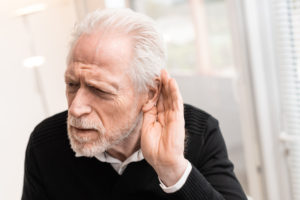 You might notice the television is a little louder as your husband is watching in the other room. Or perhaps you’ve been having a hard time hearing your granddaughter’s voice on the other end of the phone. Are these struggles something to worry about?
You might notice the television is a little louder as your husband is watching in the other room. Or perhaps you’ve been having a hard time hearing your granddaughter’s voice on the other end of the phone. Are these struggles something to worry about?
Most people experience some degree of hearing loss with age. Roughly 25% to 40% of people over age 65 are affected. That number jumps in the following decades to half of people 75+ and 80% of 80-year-olds.
Advertisement
Being unable to hear, even to the slightest degree, makes life more difficult. Aside from missing the things loved ones are saying, it can lead to feelings of embarrassment, depression, and social isolation.
Even mild hearing is associated with a greater risk of cognitive impairment.
Is all hearing loss the same? Not really. There are varying degrees, and it is measured by your ability to pick up on various sounds and frequencies.
Hearing is measured in two ways: how loud something needs to be before you can hear it, and which frequencies are harder to hear. For example, higher-pitched sounds become less recognizable than lower pitches.
Sound is measured in units called decibels (dB). Some examples of sound loudness are:
- Breathing: 10 dB
- Normal conversation: 40-60 dB
- Traffic: 80 dB
- Lawnmower: 90 dB
- Nearby thunder: 120 dB
- Jet engine: 140 dB
Advertisement
Prolonged exposure to sounds louder than 85 dB can cause hearing damage, while sounds in the 130-140 dB range can lead to acute hearing loss and can cause pain.
What are the degrees of hearing loss you should be concerned about? Here’s a breakdown of the classifications of hearing loss.
- Slight hearing loss: You can’t hear sounds quieter than 15-20 dBm like whispering or leaves rustling. It may make communication more difficult, but it might not be a major concern for some clinicians.
- Mild hearing loss: You may experience trouble communicating in areas with a lot of background noise. Difficulty hearing the person you’re talking to in a crowded restaurant, for example. Technically, it is defined as loss between 20 and 40 dB.
- Moderate hearing loss: At this point, you need to regularly ask people to repeat themselves during in-person and telephone conversations. It is measured as an inability to pick up sound below 41-60 dB.
- Severe hearing loss: You cannot hear people talking without a hearing aid or other amplification device, or rely on reading lips to understand. Defined as hearing loss between 61-80 dB.
- Profound hearing loss: You can only hear extremely loud conversations or sounds. It extremely difficult to hear without a hearing device, and sign language may be required. Sounds lower than 81 dB are inaudible.
If you’ve been wondering about your hearing, those guidelines may help. It is also recommended that if you’ve noticed any change in your ability to hear or communicate, talk to your doctor about an examination.
